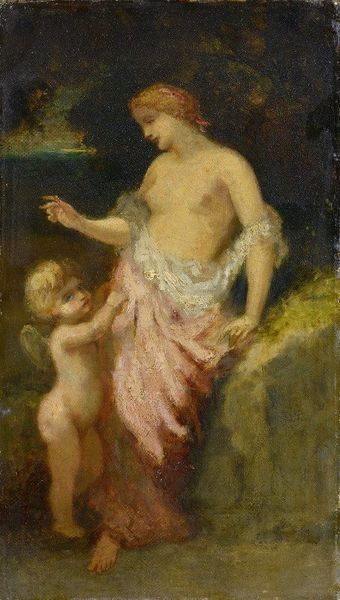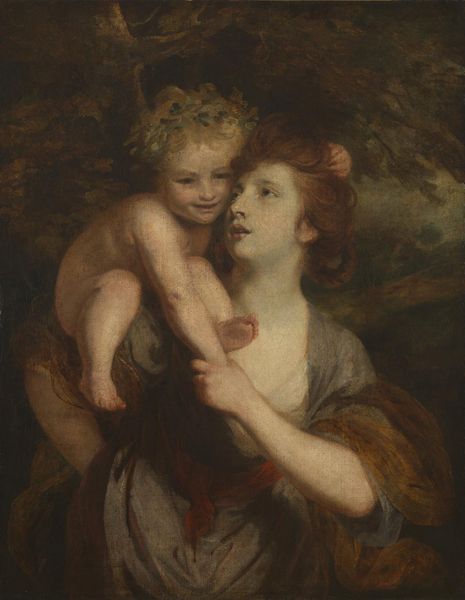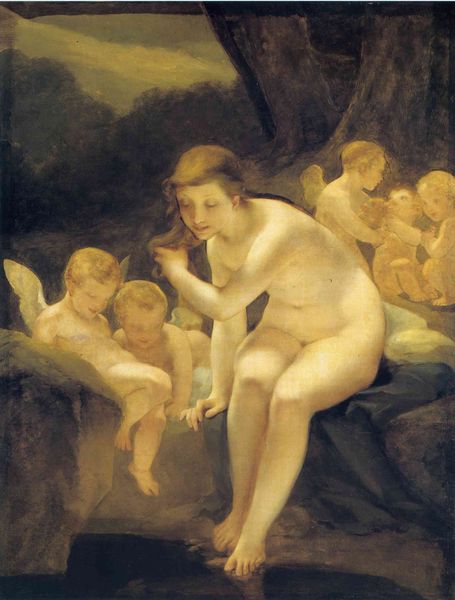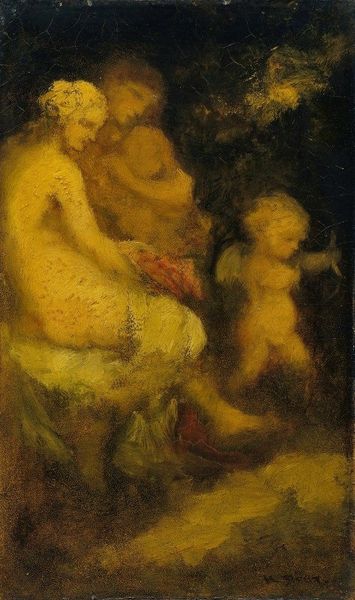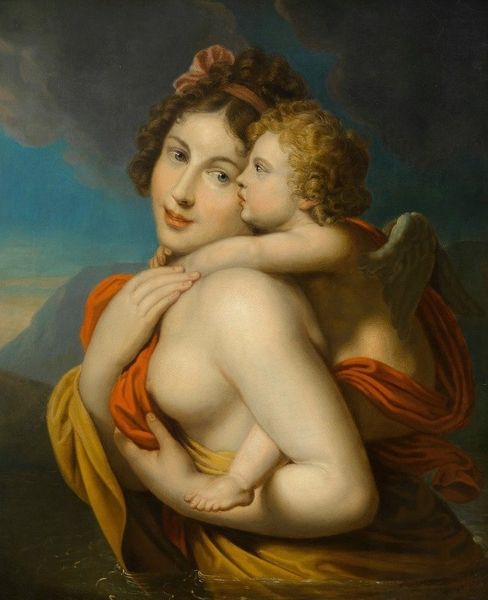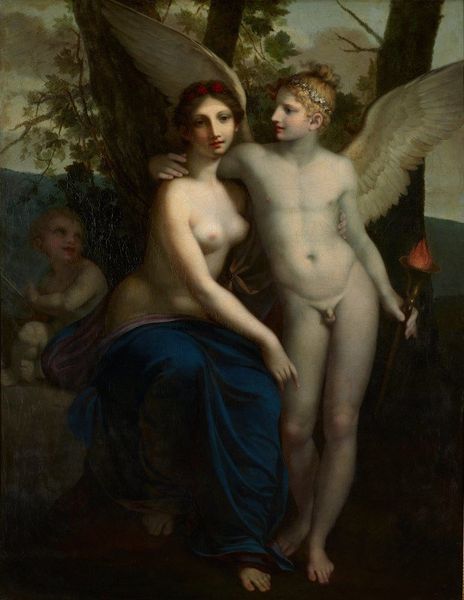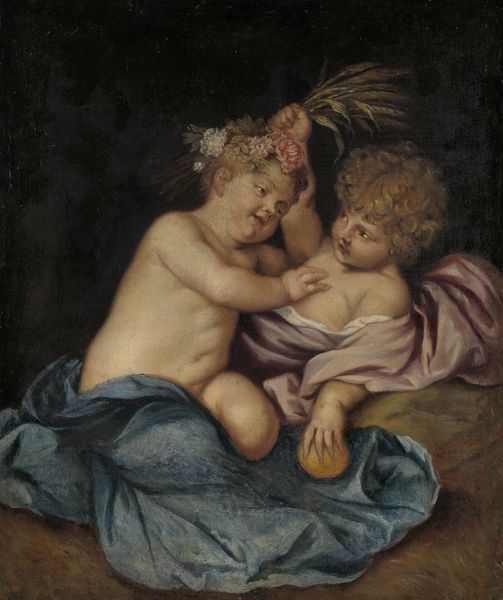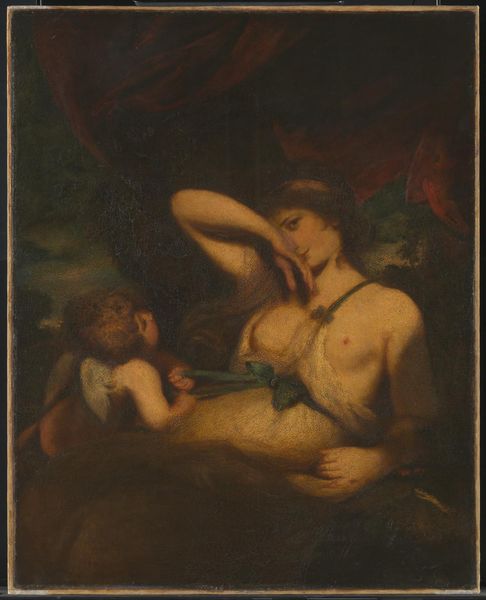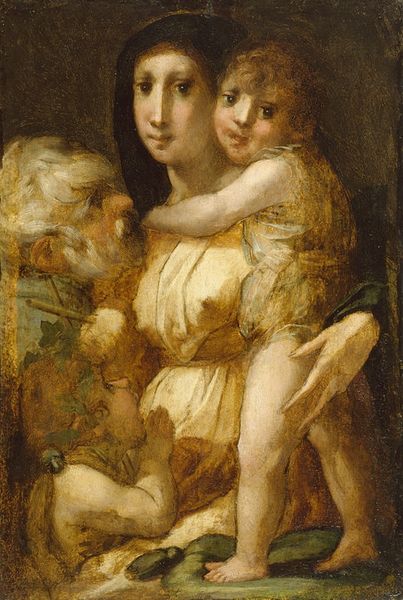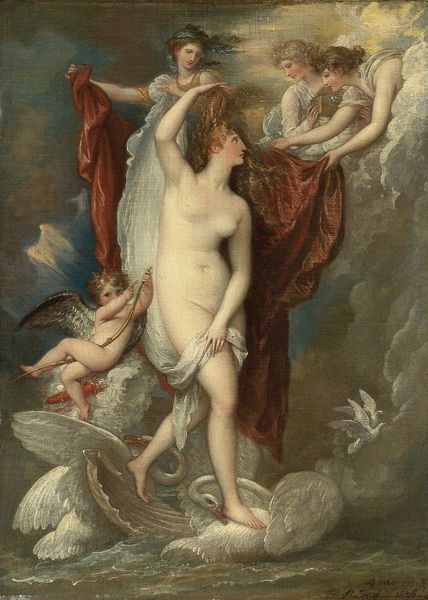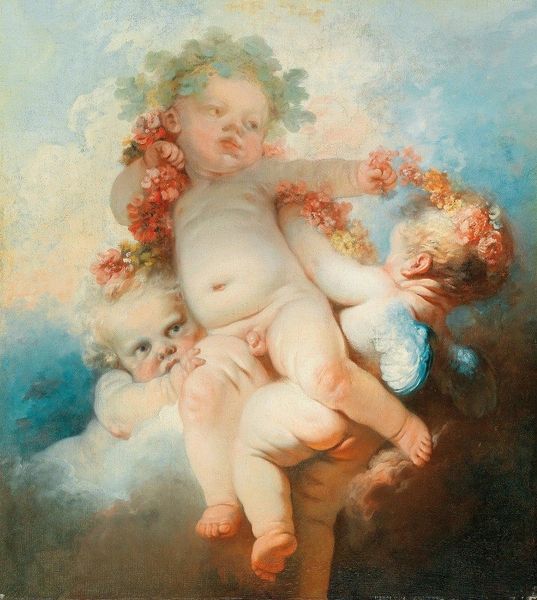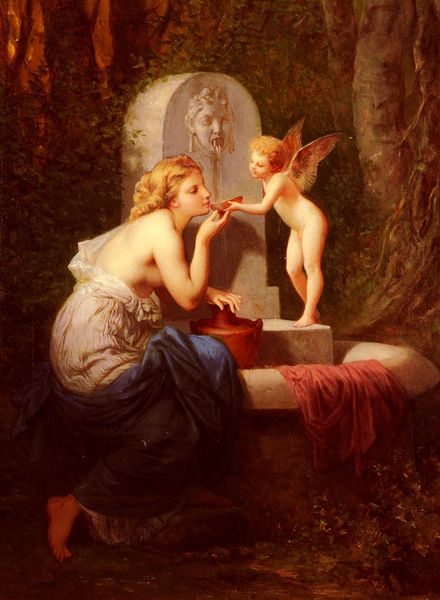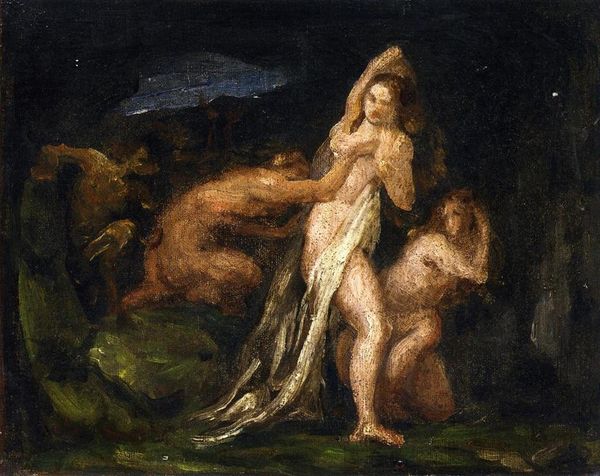
Copyright: Public Domain: Artvee
Curator: This is Narcisse-Virgilio Diaz’s “Education of Cupid,” created around 1859, rendered in oil paint. Editor: It has such a shadowy, almost theatrical feel, doesn't it? Like a spotlight is just catching the figures amidst a darkened stage set. Curator: Indeed. Diaz was known for these romantic woodland scenes, often populated by mythological figures. Cupid, as we see here, becomes less an autonomous god and more a figure embedded in the narrative of motherhood and learning. Editor: I'm immediately struck by how Venus’s gaze dominates. It's a gaze of such… knowingness, wouldn’t you say? She seems to be sharing a secret with us, maybe about the power she wields through love and beauty. There’s the maternal softness, obviously, but also a sharp awareness. Curator: Precisely. The rose Cupid holds is central. It's a multifaceted symbol: of love, secrecy, and also potential pain. Look closely; is it an innocent offering, or something more strategic being taught? This all hints at a deeper exploration of love's complexities within society. Think about how such imagery circulated at the time. Did it uphold or subvert dominant ideas? Editor: I am more drawn to the implications about power itself. In art like this, the idealization of the feminine is nearly always co-opted in larger projects that affirm the state, the Church, and elite structures of gender itself. Do we lose sight of Venus, as an icon, if we overlook these historical implications? Curator: It is a complex knot to untangle. However, even within that politicized landscape, an image like this invites viewers to meditate on love, learning, and the complex relationship between mother and child through powerful visual cues rooted deeply in our shared history. The pose is familiar, reminiscent of mother-and-child iconography going back millennia. Editor: Perhaps, by looking at this painting and exploring the symbols that Diaz deploys here, we are getting to look more closely into the cultural theater in which it was staged and produced. Curator: And understand better the visual language, repeated again and again, with slight and crucial variations. Thank you for your observations.
Comments
No comments
Be the first to comment and join the conversation on the ultimate creative platform.
